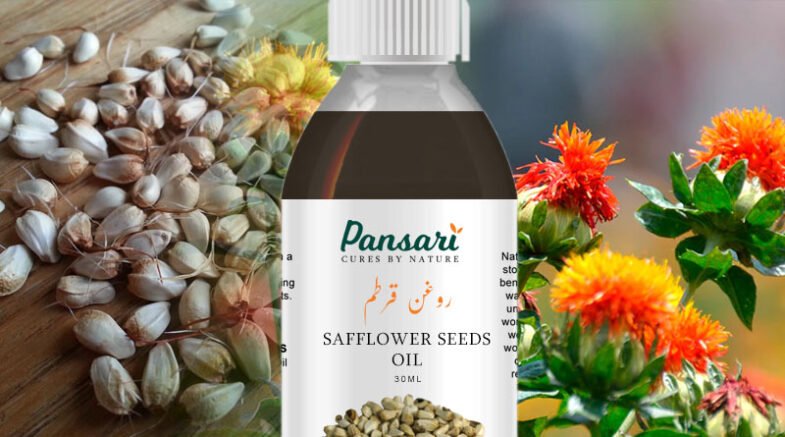Safflower oil was once used to make paint, but now it is used to cook, make margarine, and make salad dressing.

Pakistan, the world’s third-largest importer of edible oil, is experiencing severe scarcity. It generates close to 0.5 million metric tons of edible oil every year. Pakistan imports 3.5 billion rupees’ worth of edible oil annually due to a lack of domestic production. It comes in after petroleum products in the import bill. Safflower oil may be used to alleviate Pakistan’s oil deficit.
Some of the alternative oils extracted from sunflower, canola, castor-bean, peanut, coconut, etc. are fit for edible purposes, but they are least cultivated so cannot fulfill the volume of demand due to being found incapable to withstand edaphic or climatic problems including temperature extremes, drought, frost, salinity, poor soil nutrition, etc.
Due to its significance in human nourishment and adaptability to edaphic climate, it is essential to grow oil seed crop safflower with a high nutritional significance which has the most considerations.
Safflower (Carthamus tinctorius L.), called by the name “Kusumba,” is a prominent oil seed crop that originated in Turkey, Uzbekistan, and China. Safflower is being grown from China through the Mediterranean region, along the Nile valley, and up to Ethiopia.
The production of safflower seeds around the world started in 1965 and reached its peak in 1975. It then started to go down in 1985. Mexico was the world’s largest producer of safflower until 1980. However, the land in Mexico began to be exploited and was reduced to barely 10%, which ultimately had an impact on land productivity as well. Thus, safflower production fell in the following years.
Safflower seed has 14–15% protein, 25–37% oil, 5–8% water, 2–7% ash, and 32–34% crude fiber. Safflower achene oil content ranges from 24 to 37 percent. The oil is a rich source of omega-6 and omega-9 fatty acids.
Safflower seed contains protein, tocopherols, phytosterols, and minerals. For high-quality oil, the fatty acid content is crucial. Oleic acid makes up 70% to 75% of the monosaturated to polyunsaturated fatty acid content, while linoleic acid makes up 70% to 75%. The safflower seed oil has the widest range of fatty acid composition. Because of this quality, the farming community gives safflower oil more attention and has a higher nutritional value.
It is an all-purpose oil seed crop that is mostly grown for premium food oil and birdseed. Safflower oil was once used to make paint, but now it is used to cook, make margarine, and make salad dressing. Safflower is also produced for its petals, which are used for a variety of functions, including coloring and flavoring food, preparing herbal teas, serving as cut flowers for events, and feeding cattle.
The Safflower is cultivated in China as a medicinal plant for the treatment of sterility in both sexes, heart disease, placenta release, lowering blood cholesterol, stillbirth, induction of labor in expectant women, painful, heavy, and delayed menstrual periods, respiratory diseases (whooping cough, chronic bronchitis), various types of rheumatism (sciatica, thorax, arthritis), gastritis, etc.
- Despite having a wide range of uses, safflower has remained a small crop. The importance of this underutilized and economically significant crop must therefore be brought to the attention of the global society. Therefore, to progress the development of the scientific community, research must be done on this crop, and it must be promoted as a commercial crop. To progress the development of edible oil, pharmaceuticals, the varnishes’ industry, paint, dye extraction (carthamin), livestock feed, sources of tocopherol, cut flowers, and vegetables, it is necessary to do research on this crop and promote it as a commercial commodity.

